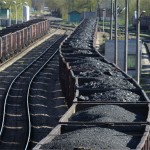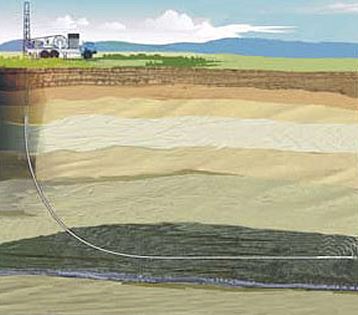EDITOR’S NOTE: (This is part V of a series on energy. We hope it helps the reader better understand the issues facing our country and our state as we endeavor to tackle the problem of providing our citizens and our businesses with their energy needs.)
 Transportation
Transportation
* In 2015, natural gas supplied 3% of the energy used in the U.S. transportation sector.[442]
* Between 2007 and 2013, the combination of increased oil prices, decreased natural gas prices, increased domestic natural gas production, and stricter environmental regulations created incentives to use natural gas more widely for transportation.[443] [444] [445] [446] Steep declines in oil prices since 2014 have made natural gas less competitive as a transportation fuel.[447] [448] [449]
* Other disincentives to the wider use of natural gas in transportation include (1) the capital costs of equipping service stations to dispense natural gas, and (2) the lower energy density (per unit volume) of compressed or liquefied natural gas, as compared to gasoline and diesel.[450] [451] [452] [453] [454] Per EIA:
* In 2012, the only factory-built compressed natural gas car available to non-fleet customers in the U.S. was the Honda Civic Natural Gas. It was the “cleanest internal-combustion vehicle ever tested by the U.S. Environmental Protection Agency.”[456] Compared to a similarly equipped Honda Civic EX, the natural gas model:
- Had 41-48% less range (220-248 miles versus 422).
- Had 29% less horsepower (110 hp versus 140).
- Had 14% less torque (110 lb-ft versus 128).
- Had 51% less trunk space (6.1 cubic feet versus 12.5).
- Cost 27% or $5,650 more ($26,925 versus $21,275).[457] [458] [459] [460]
* Based on the average nationwide prices of gasoline and compressed natural gas in July 2013, the 2012 Civic Natural Gas would recoup the $5,650 cost premium over the standard model after 111,000 miles of driving.[461]
* Based on the average nationwide prices of gasoline and compressed natural gas in 2015, the 2015 Civic Natural Gas would recoup the $5,700 cost premium over the standard model after more than two million miles of driving.[462]
* In 2015, Honda announced it was cancelling the Civic Natural Gas after 2015 due to low gasoline prices and a lack of consumer demand.[463]
* Per Vivek Chandra, a natural gas industry consultant and the author of Fundamentals of Natural Gas:[464]
Natural gas holds the greatest promise as a fuel for fleet vehicles that refuel at a central location, such as transit buses, short-haul delivery vehicles, taxis, government cars, and light trucks. There are currently approximately 65,000 natural gas vehicles (NGVs) in operation in the United States using CNG [compressed natural gas] and LNG [liquefied natural gas] as their main fuels.[465]
* Home fueling is possible with natural gas vehicles, but as of 2016, Honda does not recommend this for the Civic Natural Gas because “of moisture and other contaminants inherent in some natural gas supplies, and the inability of some home refueling systems to adequately dry the gas and remove contaminants….”[466]
Extraction Methods
* Natural gas resources can be grouped into two major categories based upon their accessibility:
- conventional natural gas, which is located in porous rocks and reservoirs that allow the gas to freely flow to the surface of the earth when it is accessed through drilling.[467] [468]
- shale gas or tight gas, which is located in semi-porous or non-porous rocks that don’t allow the gas to freely flow when accessed through drilling. This natural gas can be extracted by using a combination of technologies known as horizontal drilling and hydraulic fracturing.[469] [470] [471] [472]
* Horizontal drilling involves penetrating the ground vertically (like traditional drilling) and then turning horizontally in order to drill along the layer that contains the fossil fuel resources. This method of drilling exposes more of the fossil fuel resources to the bore of each well, thus increasing yields and decreasing the surface footprint of drilling operations.[473] [474]
* Horizontal drilling was first successfully employed in 1929 and has been used commercially since the late 1980s. By 1990, more than 1,000 horizontal wells were drilled worldwide, almost all for the purpose of extracting crude oil.[476]
* Hydraulic fracturing or fracking involves injecting fluids at high pressures from the bore of the well into the layer that contains the fossil fuel resources. This process creates fractures in the rock, which allows natural gas to flow to the bore of the well. The fluids used for fracking typically contain sand or ceramic beads that serve to hold open the fractures after they have been created. This fluid also contains varying chemicals that are used for purposes such as preventing pipe corrosion.[477] [478] (A detailed description of the process is shown in the video below.)
* Hydraulic fracturing was first successfully employed to drill for oil in 1947 and has been used commercially since the 1950s. By 1955, more than 100,000 fracking treatments were performed. In the 1980s and early 1990s, Texas oilman George Mitchell refined the process of fracking to extract natural gas from shale in a cost-effective manner.[479]
* In the early 2000s, horizontal drilling coupled with hydraulic fracturing became widely used to extract natural gas from shale. In the mid-2000s, the combination of these technologies also became widely used to extract oil from shale.[480] [481] [482] The process is shown in this video:
* From 2005 to 2015, U.S. natural gas production increased by 50%, primarily due to the use of horizontal drilling coupled with hydraulic fracturing in shale formations.[483] [484] [485]
* As of 2013, horizontal drilling coupled with hydraulic fracturing has not been widely used to extract natural gas outside the U.S.[486] [487] In 2013, the U.S. Energy Information Administration (EIA) estimated that 32% of worldwide technically recoverable natural gas resources are located in shale formations.[488]
* For facts about the environmental impacts of horizontal drilling and hydraulic fracturing, visit the politics section of this research.
Natural Resources
* Estimates of natural gas resources are uncertain and subject to change, particularly for shale formations.[489] [490]
* Definitions used for estimates of fossil fuel resources include:
- Proved reserves, which are known resources that can be profitably extracted at current prices with current technologies.[491] [492]
- Technically recoverable reserves, which are resources that can be extracted with current technology regardless of economic viability.[493] [494] [495]
- Undiscovered recoverable reserves, which are resources that are not yet discovered but are “estimated to exist in favorable geologic settings.”[496]
* Per EIA, it is “misleading” to make assessments about total fossil fuel resources on the basis of proved reserves because “proved reserves are an accounting concept that is based on known projects, and it is not an appropriate measure for judging total resource availability in the long term.”[497] [498] [499] [500]
* In 1977, the U.S. had 207 trillion cubic feet of proved natural gas reserves. If this represented all U.S. natural gas resources, the U.S. would have run out of natural gas in 1989.[501]
* As of 2013, the U.S. Energy Information Administration (EIA) estimates that the U.S. has 2,276 trillion cubic feet of technically recoverable natural gas. This figure does not include resources located in areas “areas where drilling is officially prohibited,” and it does not include about 33 trillion cubic feet of offshore natural gas located in areas that are not expected to be drilled by 2040.[502]
* 2,276 trillion cubic feet of technically recoverable natural gas is equivalent to:
- 84 years of U.S. natural gas production at the 2015 production rate.[503]
- 83 years of U.S. natural gas consumption at the 2015 consumption rate.[504]
* 21,897 trillion cubic feet of technically recoverable natural gas is equivalent to 197 years of worldwide natural gas production at the 2010 production rate.[505]
* The figures above do not account for methane hydrates, which are “cage-like lattices of water molecules containing methane, the chief constituent of natural gas.” Globally, these resources are estimated to be equivalent to 10,000-100,000 trillion cubic feet of natural gas, or 90-900 years of worldwide natural gas production at the 2010 production rate.[506] [507]
* Per EIA, methane hydrates:
Coal
 * Coal is a class of combustible rocks that are at least 50% carbon by weight.[509] [510]
* Coal is a class of combustible rocks that are at least 50% carbon by weight.[509] [510]* Coal is categorized into different “ranks,” primarily depending upon how much of it is comprised of carbon. Coals with higher carbon content generally contain more energy and have a higher rank. The main ranks of coal (from lowest to highest) are lignite, subbituminous coal, bituminous coal, and anthracite.[511] [512] [513] [514]
* Coal is formed of plant materials that have been buried and transformed by pressure, heat, and time.[515]
* Coal may have been used as early as 3,000 years ago to smelt copper in China, and it was used in England for cooking during the era of the Roman Empire. The burning of coal to generate heat became widespread in Europe during the mid-1600s to early 1700s. Coal usage continued to expand and diversify through the 1800s, particularly as fuel for powering steam engines.[516] [517]
* Today, coal is the world’s leading fuel for generating electricity. Due to attributes such as low cost and widespread availability, coal accounted for 40% of global electricity production in 2012.[518] [519] [520]
* More than 90% of the coal produced in the U.S. is used to generate electricity.[521]
* Coal is also:
- combusted to generate heat for industrial processes and for commercial, military, and institutional facilities.[522]
-
- 16% of all primary energy consumed in the U.S.
- 37% of primary energy consumed in the electric power sector.
- 7% of primary energy consumed in the industrial sector (not including energy purchased from electric power utilities).
-
- total electricity generation from coal will increase by 23% between 2012 and 2040.
- coal will decrease from 40% of total world electricity generation in 2012 to 29% by 2040.
- coal with continue “to be the largest single fuel used for electricity generation worldwide” through 2040.[526]1% of primary energy consumed in the residential and commercial sectors (not including energy purchased from electric power utilities).[527]Many nations have enacted polices to limit the use of coal in order to reduce greenhouse gases. Based upon these policies and other variables, the U.S. Energy Information Administration projected in 2016 that:
* In 2015, coal supplied:
* In 2014, the U.S. had 1,145 coal-fired electricity generating units located at 491 electric power plants.[528]
* Because coal power plants are less efficient than certain natural gas power plants,[529] [530] and because some electricity is generated outside of the electric power sector, during 2015 coal supplied:
To Be Continued….
- The Most Progressive Budget in Virginia’s History - December 21, 2019
- When is a Clean Water Act Permit Needed? - December 21, 2019
- Should U.S. Consider Modern Monetary Theory to Improve Economy? - December 21, 2019


